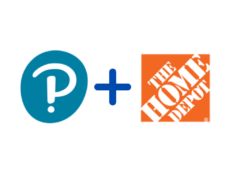
Articles
K-12
Bridging the Digital Divide Among Schools Is Within Reach Despite FCC Red Tape
By Henry Kronk
October 05, 2018
On Tuesday, the State of the States Report, which tracks school connectivity issues, along with EducationSuperHighway, released their annual report. The bad news is that the digital divide still separates 2.3 million American students from access to broadband internet. The good news is that 1.9 million of these learners live in just 62 districts across the country.
Connecting those districts at speeds of 100 Kbps per student (a goal set in 2013 by 49 governors, the Federal Communications Commission (FCC), EducationSuperHighway, and others) appears easily within reach. It might be as simple as switching contracts. According to the report, “Eighty-seven percent of these districts, representing 1.7 million students, can meet the 100 kbps goal by simply getting the same bandwidth pricing as peer districts in their state … On average, we found 30 peer deals for each of these districts, meaning there’s not just one deal that would allow them to upgrade to 100 kbps or more per student at no additional cost.”
Online learning and educational opportunities continue to expand, but few are accessible with dialup internet. Something as simple as streaming a video or downloading an application of any size is not on the menu for these schools. Students from the Woodman School in rural Montana told Wired how it would be great if more than three kids could search Google at the same time.
Narrowing the Divide
The so-called digital divide is still much larger than 2.3 million people when looking outside of schools themselves. But schools are a great place to start. In 2013, a coalition led by EducationSuperHighway and joined by the FCC and 49 governors set the goal of achieving a connection speed of 100 Kbps at 99% of U.S. schools. According to the recent report, a huge amount of progress has been made since the initiative launched in 2013.
In that year, just 4 million American learners had access to broadband in the classroom. With help from the FCC (and their E-rate program) numerous efforts and coalitions across states, and the dropping cost of internet infrastructure, that figure has jumped to 44.7 million.
A full 27 states have connected more than 99% of their schools to broadband.
The FCC considers connection speeds of 100 Kbps per student to be ‘high speed.’ Many schools, however, have gone far beyond these speeds, reaching above even 1 Mbps. Arkansas has led the way in this regard by connecting 98% of its schools to speeds of 1Mbps+ per student.
“In Arkansas, our students are developing 21st century skills in the classroom to succeed in tomorrow’s workforce. This requires high-speed Internet access in every school – which is why we upgraded the Arkansas Public Schools Computer Network and can now provide 1 Mbps per student to 98% of school districts.”
Red Tape from the FCC
Ajit Pai, the current chairman of the FCC, says bridging the digital divide is one of his priorities while in office. But under Pai’s leadership the FCC itself formed a significant barrier to many schools seeking better connection. Since taking office, over 60 schools have had their E-rate applications delayed or outright denied by Pai’s office according to a separate report by EducationSuperHighway. The timeline for application processing has increased to an average of 245 days. (The Universal Service Administration Company—an internet infrastructure provider—has also been responsible for some of these delays.)
This red tape has withheld broadband from schools with roughly 750,000 learners in total. Without the resources to pursue these applications, many schools simply drop them.
“Small districts without a consultant usually just give up on it. It’s more work than they get benefit back,” said Eric Chambers, director of E-rate services for the Northwest Council for Computer Education according to Wired. “No one should have to pay me to do this work.”
Separately, a group of senators also proposed in May that the FCC extend E-rate funding to the growing popularity of dispersing WiFi signals to communities via hotspots in school buses. Regardless, the digital divide continues to narrow, and for many communities, broadband service is simply a question of changing providers when their contracts end.









No Comments